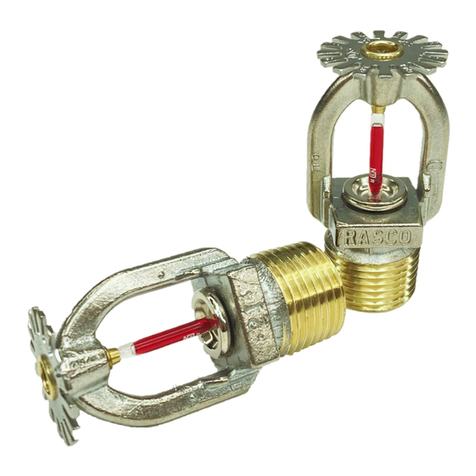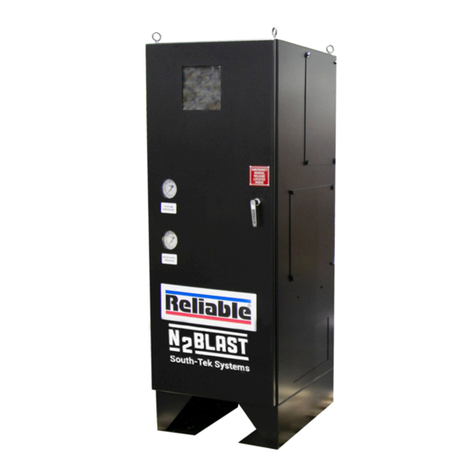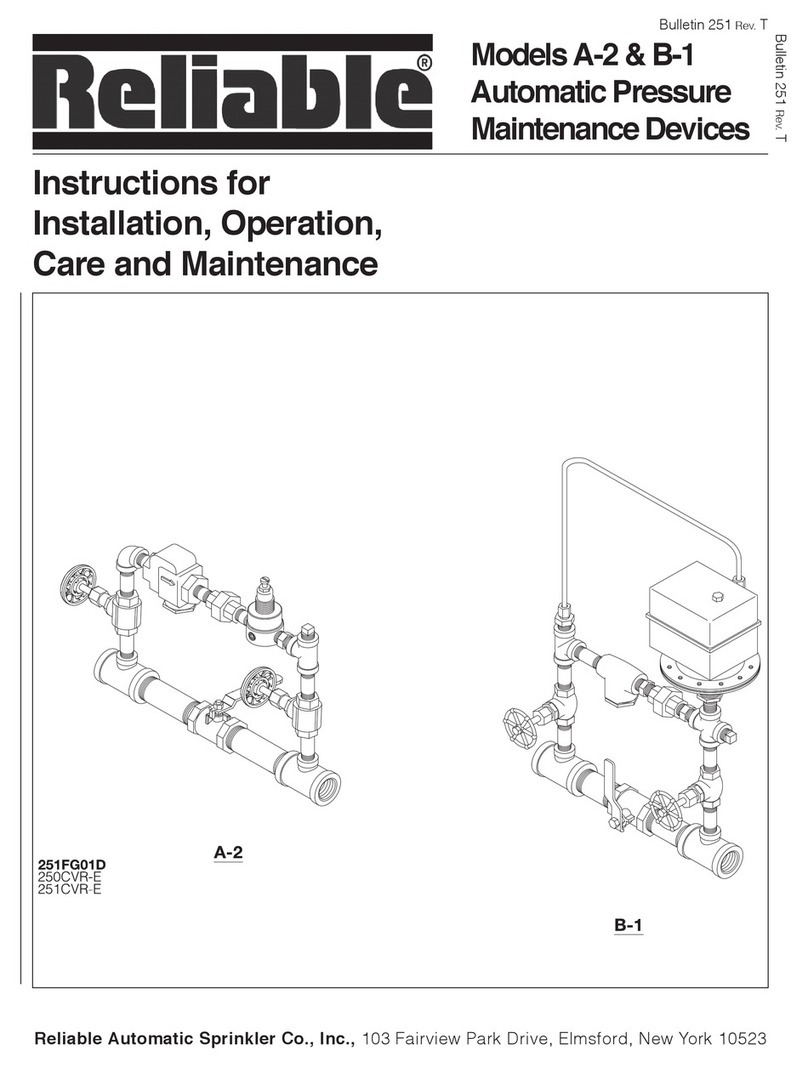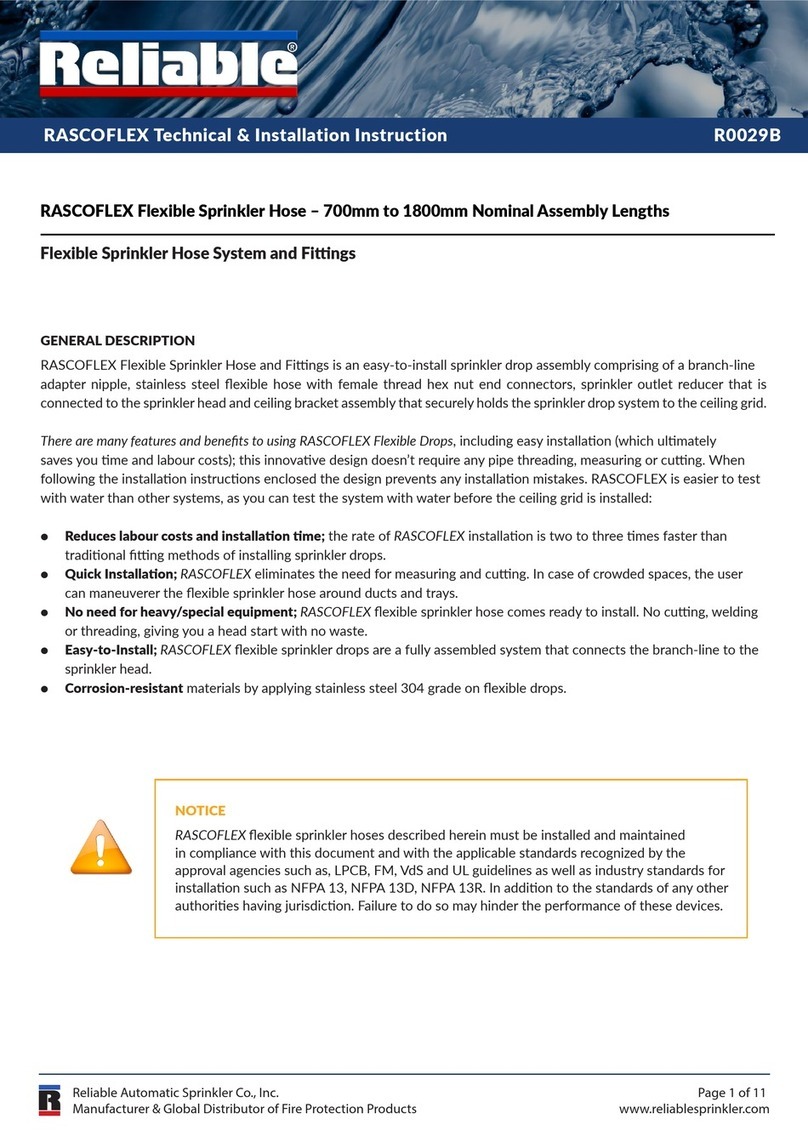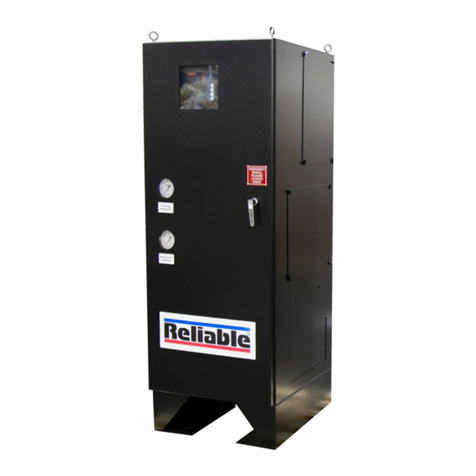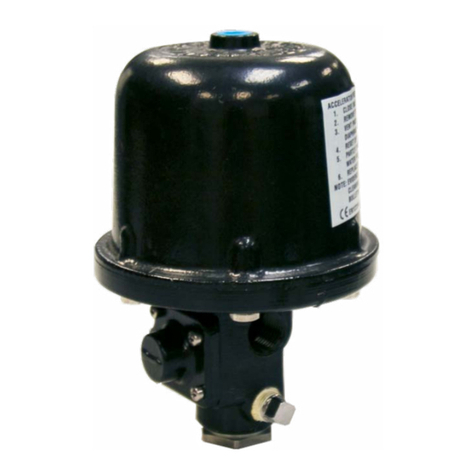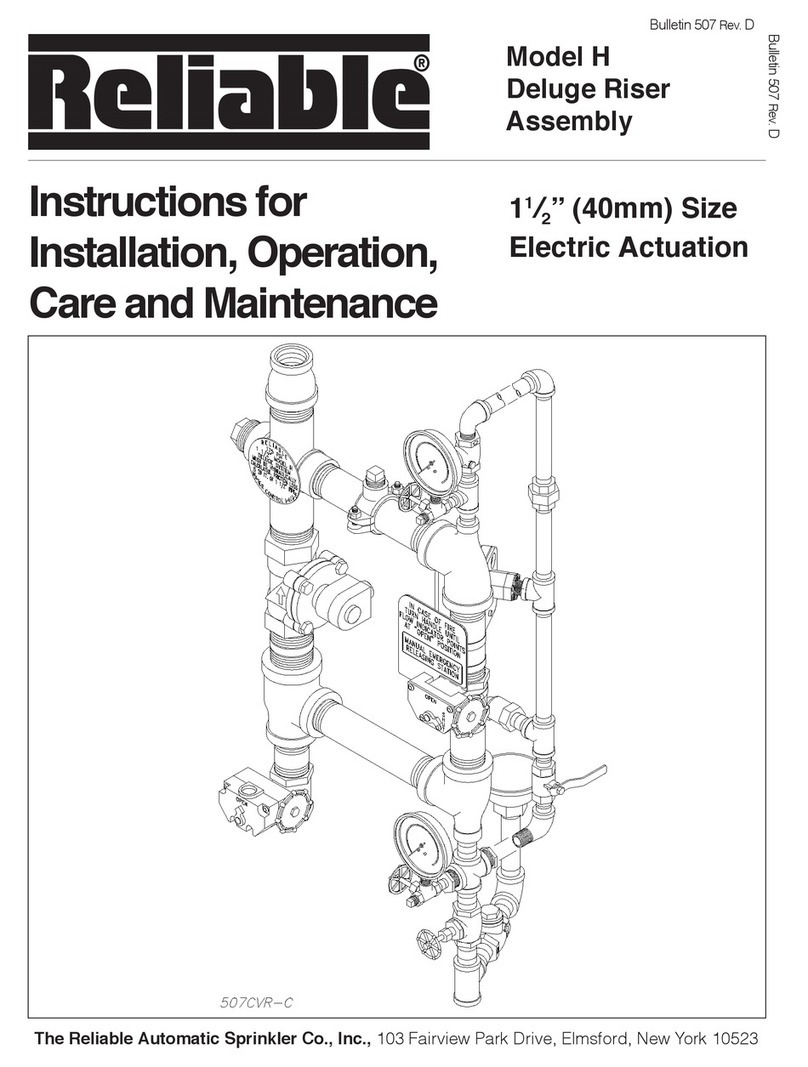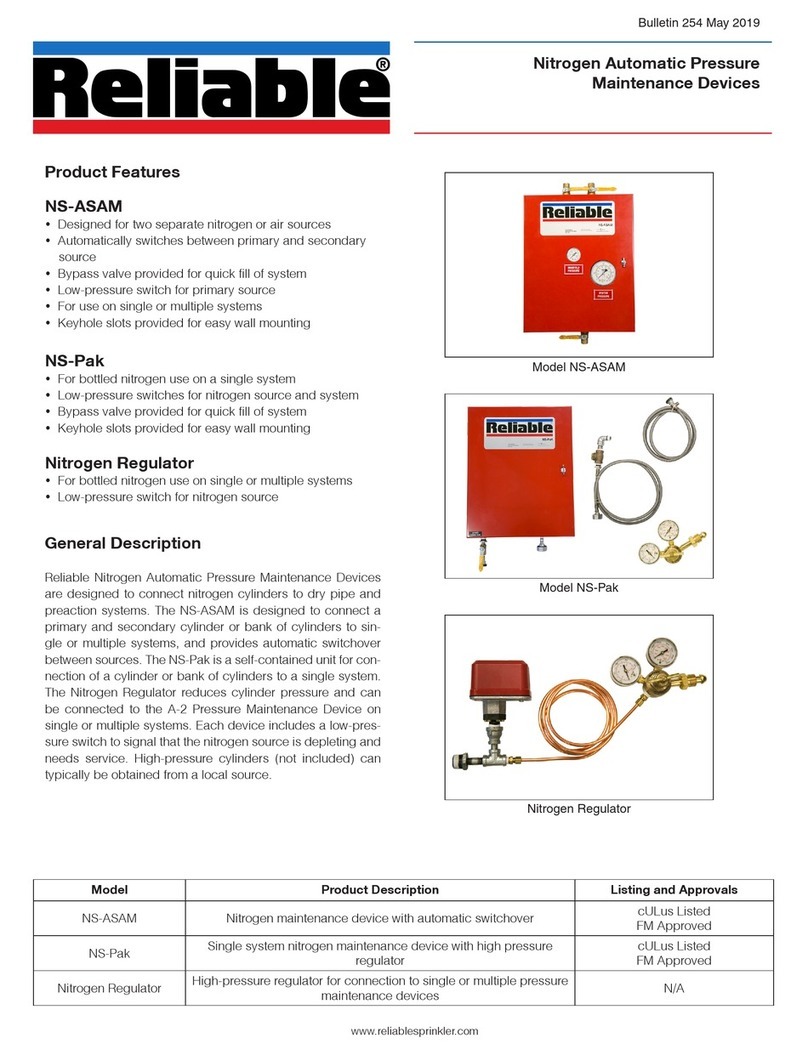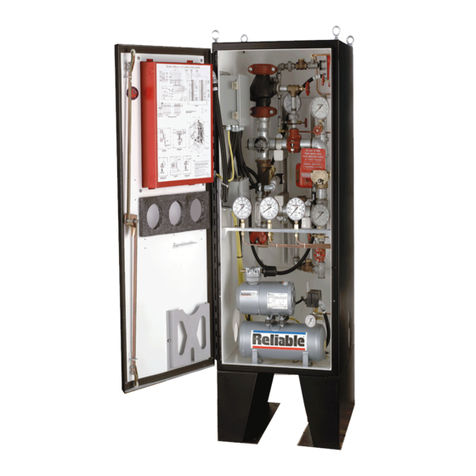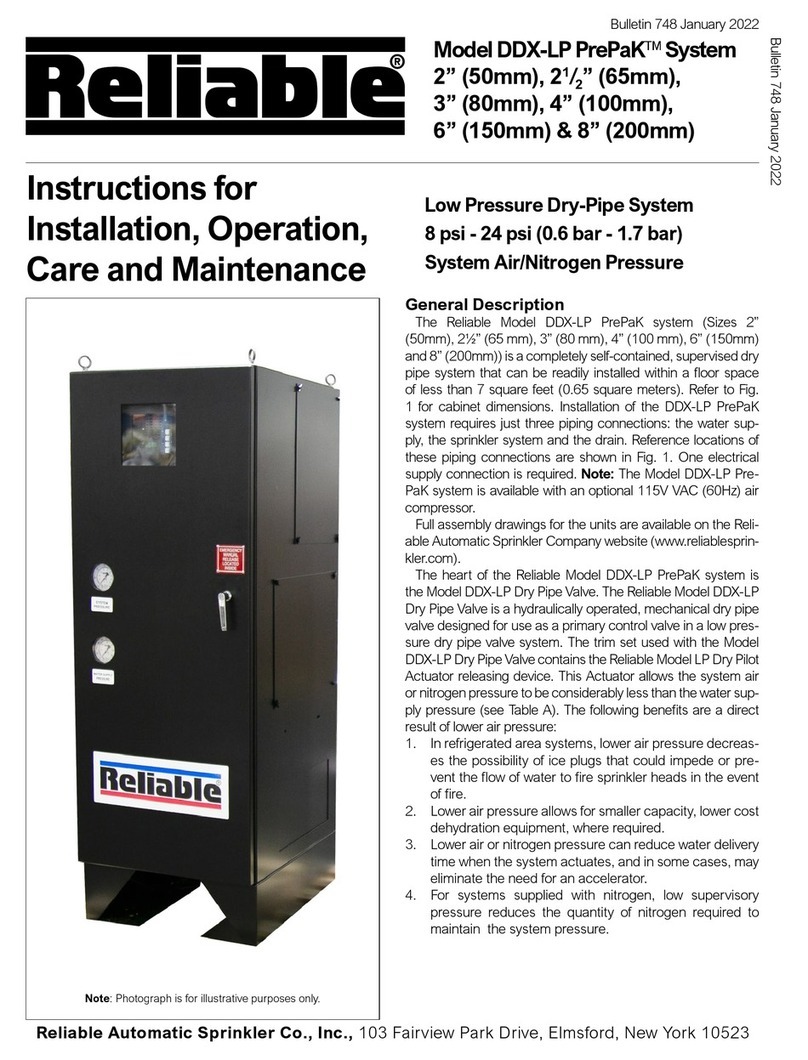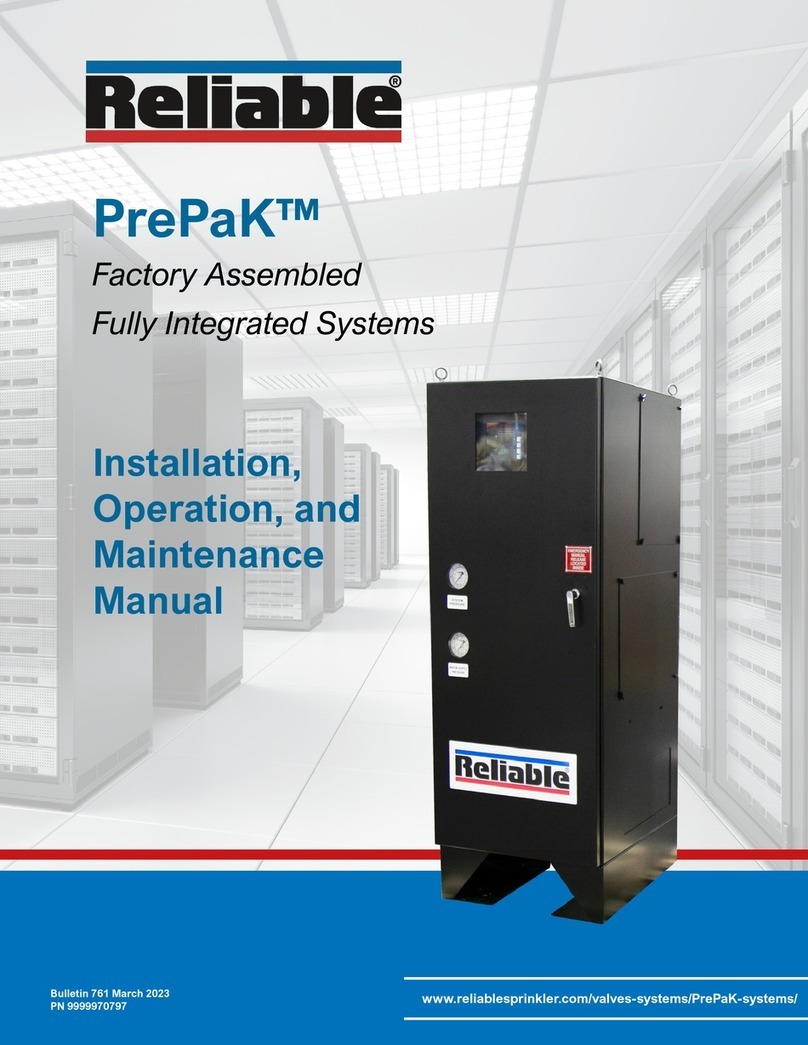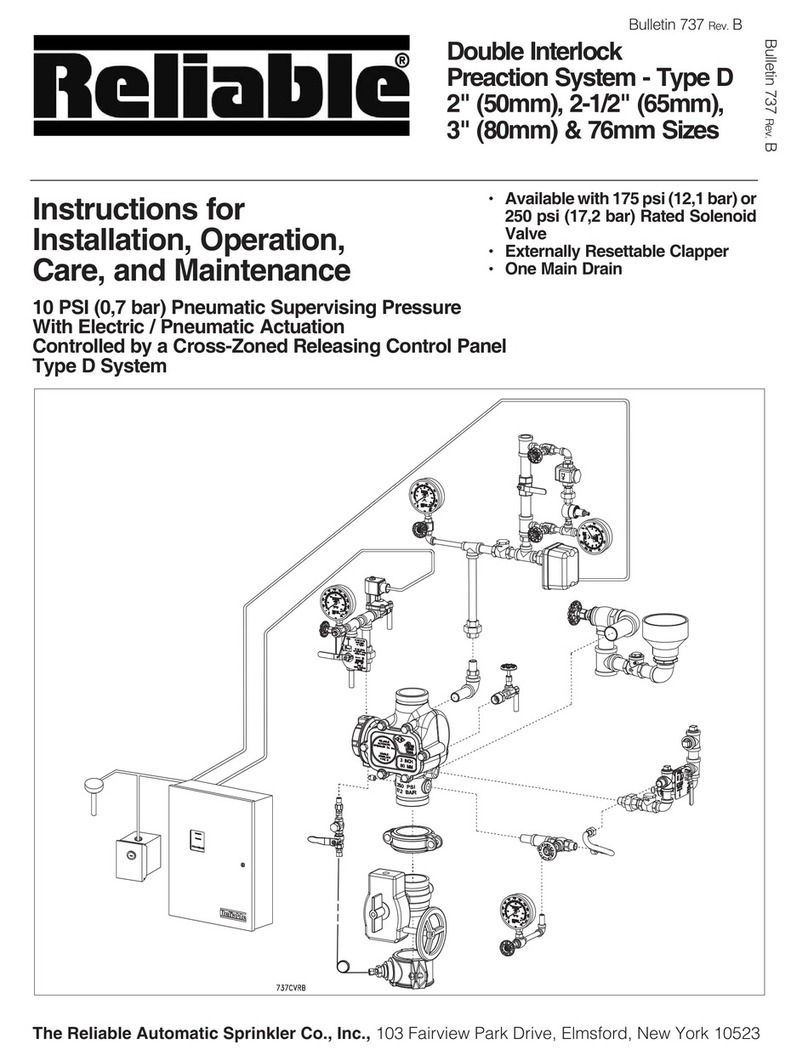
5.
When the air compressor in the Model DDX Type F PrePaK
system is used to initially fill the sprinkler system with air, the
steel enclosure door should remain open to provide maxi-
mum intake air flow to the air compressor. The air compressor
is connected to a storage tank. This tank functions as a res-
ervoir, providing make-up air to compensate for small, inter-
mittent leaks in the sprinkler system. It should be noted that
significant leaks may overburden this storage tank, thereby
causing the air compressor to continuously cycle on and off.
The factory-installed system air pressure switch may need
on-site adjustment to correspond with the air pressure val-
ues found in Table A. Adjustment, if required, should be
made according to Potter Bulletin 5401564 included with
the switch.
System Electrical Requirements
All releasing, alarm, and detection devices in the Reli-
able Model DDX Type F PrePaK system are supervised by
a Potter Model PFC-4410-RC Releasing Control Panel. All
of the terminals are translated to a water-tight terminal box
mounted on the interior of the enclosure. All field wiring is
connected to this terminal box. Note: The EOL (End of Line)
resistors have also been relocated.
The Reliable Model DDX PrePaK system is delivered
with six factory-installed electrical devices. They consist of
the following:
1. A system air pressure switch, which is used to monitor
sprinkler piping.
2. An alarm pressure switch, which indicates an actuation
of the deluge valve.
3. A normally-closed, releasing solenoid valve, which is
used to actuate the deluge valve.
4. A 1/2 HP (2”, 2-1/2”, & 3” valve) or 1 HP (4” valve) air
compressor with tank.
5. A supervised butterfly (main control) valve (Note: A sys-
tem side butterfly valve is available as an option).
6. A release control disable switch (RCDS) which is used
to disable the solenoid valve for test purposes.
The factory electrical connections of these devices,
along with information on the connection of detection devic-
es (initiating zones 1 and 2), signaling devices, and super-
visory outputs to the Potter PFC4410-RC Releasing Control
Panel are included in this bulletin. The power supply, stand-
by emergency power supply, battery charger and rectifier
circuitry are all contained within the PFC4410 panel. Bat-
teries that provide 90 hours of standby power are provided
with the panel. For additional information and detailed wiring
diagrams, please refer to Potter Manual #5403550 (Instal-
lation, Operation and Instruction of PFC4410-RC Releasing
Control Panel).
Note: In order for the solenoid valve to maintain a warranty it
must remain sealed as it came from the factory. If there are
concerns about the valve’s internal components, immediate re-
placement is recommended.
System Operation (Double Interlock)
To fully activate (discharge water from) the Reliable Model
DDX Type F PrePaK system, a fire detection device must ac-
tivate and pneumatic pressure must be lost from the sprin-
kler system piping (normally from the activation of one or
more fire sprinklers).
When the system is properly set for service, the water sup-
ply pressure simultaneously acts on both the underside of
the deluge valve’s clapper and on the valve’s push rod by
means of the pressurized push rod chamber. The resultant
pressure force acting on the push rod, in unison with the me-
chanical advantage of the deluge valve lever, is more than
sufficient to hold the valve clapper in the closed position
against the water supply pressure.
Energizing the releasing solenoid valve is only one of the
events required towards opening the deluge valve. Air pres-
sure in the sprinkler system must also be reduced to a level
low enough to activate the Model LP Dry Pilot Actuator. Both
of these events allows the deluge valve’s push-rod chamber
to be vented to drain through its outlet. Since the push-rod
chamber pressure cannot be replenished through the inlet
restriction as rapidly as it is vented, the pressure falls rapidly.
When the push-rod chamber pressure drops below one-
third of the water supply pressure, the force acting beneath
the valve clapper becomes greater than the push-rod force
acting on the lever which causes the clapper to open. Refer
to Reliable Technical Bulletin 751 for further details.
Once the clapper has opened, the lever acts as a latch,
preventing the clapper from returning to the closed position.
Water from the supply flows through the deluge valve into
the system piping and also through the alarm outlet to acti-
vate water flow alarm devices. Note that the solenoid valve
will be maintained open by the Potter Model PFC-4410-RC
Releasing/Control Panel latching feature until it is reset for
operation.
After system shutdown and draining, the Model DDX Del-
uge Valve clapper is easily reset without special tools us-
ing the external reset feature. Restore detection devices by
resetting or replacing any operated device. Once detection
devices are restored the system can be reset (see Resetting
Model DDX Type F Double Interlock Preaction System).
Resetting Model DDX Type F Double Interlock
Preaction System
1. Close the valve controlling water supply to the Del-
uge Valve and close the air or nitrogen supply to the
sprinkler system.
2. Close the pushrod chamber supply valve.
3. Open main drain valve and drain system.
4. Open all drain valves and vents at low points through-
out the system, closing them when flow of water has
stopped. Open the Model B Manual Emergency Station
to relieve pressure in the pushrod chamber of the Deluge
Valve.
5. With the alarm line valve open, push in the plunger of
ball drip valve, forcing the ball from its seat, and drain the
alarm line.
